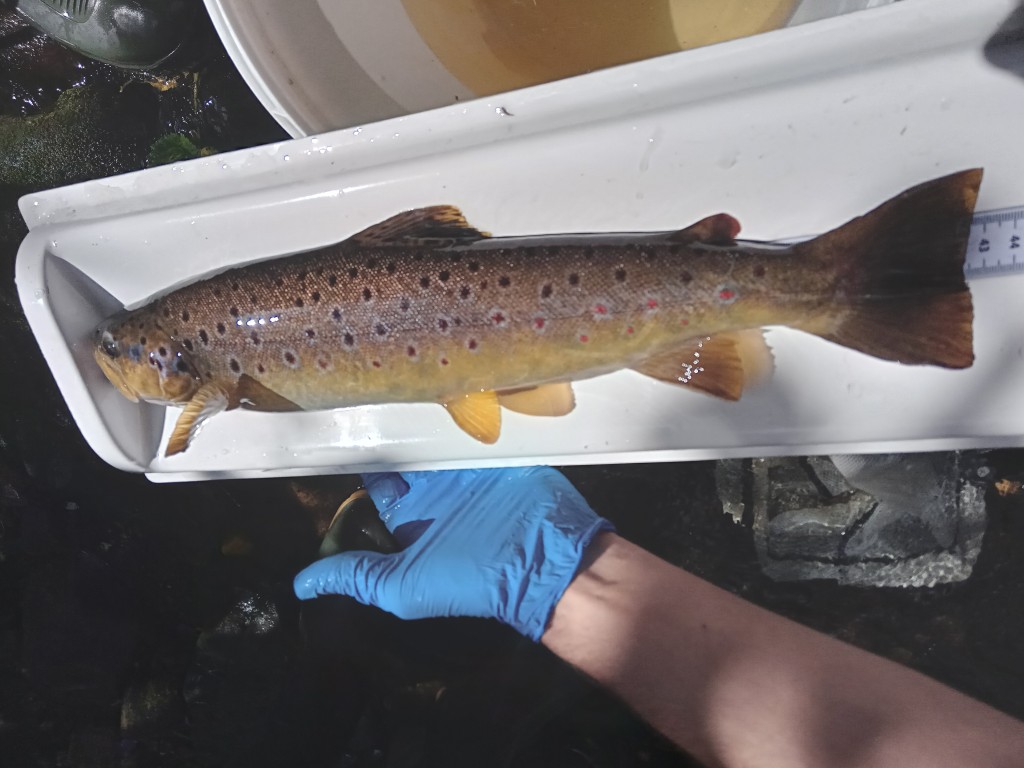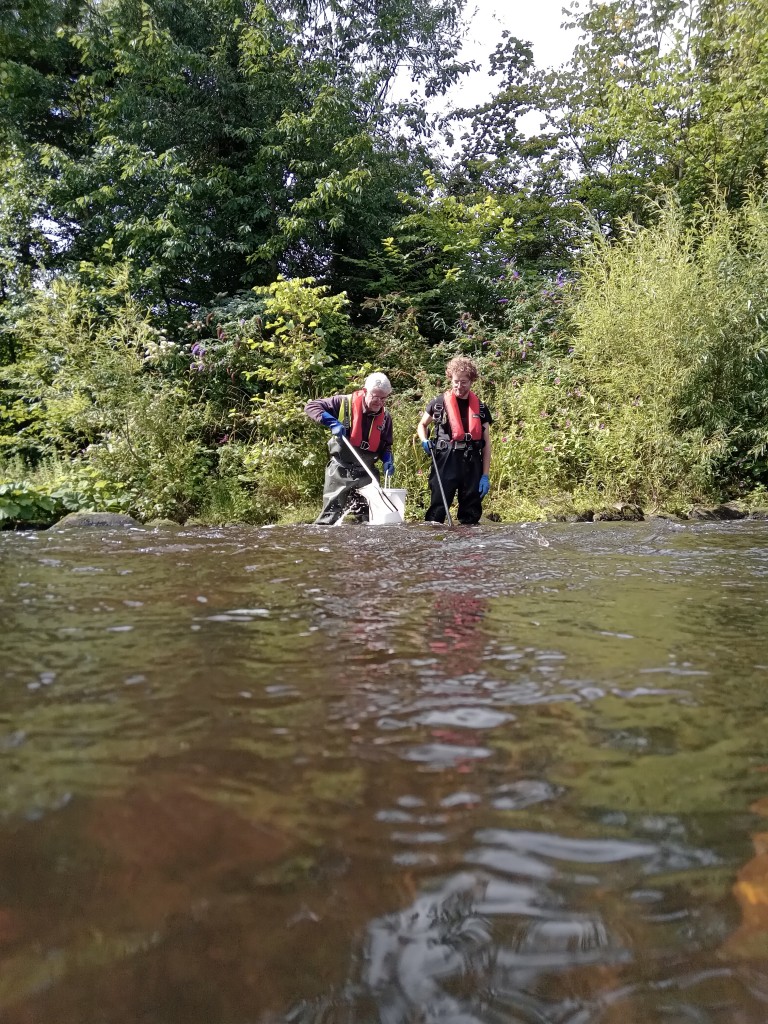This summer DCRT embarked on a mission to answer the question “are Atlantic salmon successfully breeding in the Don catchment”. We know that adult salmon are making their way up in to the head waters where we hope they would be able to find suitable habitat but we didn’t have any evidence to say whether they were successfully breeding.
We identified a number of sites where we had either had seen adult salmon or where we think the habitat would be suitable for them to spawn in. Most of these sites were in or upstream of Sheffield city centre.
To survey for fish one of the best methods is via electrofishing. This involves putting an electrical current in to the water which attracts and holds near-by fish in a position where they are able to be caught with a hand net.
With a group made up of DCRT staff/trustees and volunteers from the Upper Don Fly Fishers and Yorkshire Water, we surveyed various sites but we were unfortunately unable to find any salmon fry/parr.
Although we didn’t find any, it was a useful exercise to know that they were absent and can help us form theories as to why this may have been –
- The Don’s burgeoning salmon populations are still in low densities and will be more difficult to find. We had a dry autumn last year which may have not brought many salmon into the catchment and generally Atlantic salmon populations are in decline.
- Salmon need high quality habitat (water quality and silt-free gravels) therefore the habitat available isn’t quite suitable yet and needs improving, or we need to improve passage further into the Upper Don where habitats are less impacted.
However, it was an important exercise to improve our electrofishing experience and we were able to still find other fish. Here’s some of our results:
- In terms of the biggest fish found, we found a 42cm trout and 30cm grayling.


- Another interesting find was a minnow with a fish louse (aka Argulus) attached and a young trout with a possible parasite/deformity, photos attached. See the EA’s response…
“It’s not uncommon to see Argulus on minnow, usually as an occasional infection comprising ones or twos. There has been an increase of Argulus infections in some rivers this year. One Argulus on a minnow isn’t unusual, but due to the size of these fish, they tend not to tolerate many parasites.

The distended trout is a little less common and without dissection is very hard to confirm. Parasite infection is a possibility, but also I wonder if there is an element of deformity too. The head of the fish seems to be slightly unusual shape and the dorsal region is compressed with potential for spinal deformity. As such, I think the appearance of a distended body could be linked to this and may not be an infection.
That said, there are parasites that can cause abdominal distention and there are two possibilities that spring to mind. The tapeworm Ligula is one but isn’t common in trout. Another is a nematode called Eustrongylides that forms cysts within the body cavity and cycles through cormorants. Without opening the fish up, its hard to tell, but neither infection (or deformity) are of immediate disease risk, so unless it’s a prevalent finding or significant problem, there probably isn’t a need to investigate further.”

Finally, although it’s not very scientific as we weren’t following designed protocols, we kept a tally of the fish species on each of our runs which you can see below.
| Location | Species | Count |
| Salmon Pastures | Bullhead | 100+ |
| Trout | 1 | |
| Stone Loach | less than 10 | |
| Jessops Riverside | Grayling | 1 |
| Gudgeon | 1 | |
| Bullhead | more than 10 | |
| Oughtibridge | Trout | 24 |
| Bullhead | 24 | |
| Grayling | 6 | |
| Stone Loach | 6 | |
| Niagara | Trout | 25 |
| Bullhead | 8 | |
| Minnow | 9 | |
| Stone Loach | 14 | |
| Newhall Road | Trout | 1 |
| Stone Loach | 10 | |
| Bullhead | 22 | |
| Minnow | 1 | |
| Stevenson Road | Trout | 6 |
| Stone Loach | 6 | |
| Bullhead | 119 | |
| Minnow | 43 | |
| Grayling | 1 | |
| Blonk Street | Trout | 21 |
| Grayling | 4 | |
| Bullhead | 110 | |
| Minnow | 4 | |
| Stone Loach | 6 | |
| Club Mill Road/Sandbed Weir | Trout | 17 |
| Grayling | 3 | |
| Bullhead | 25 | |
| Minnow | 15 | |
| Stone Loach | 20 | |
| Stickleback | 1 |
We hope to see more adult salmon coming into the catchment this year and will think about whether we would like to repeat this exercise again next year.








You must be logged in to post a comment.